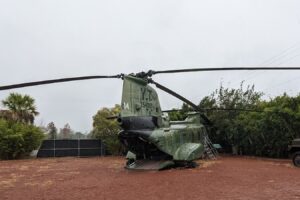On top of the hill overlooking the harbor, the British first built a fort here in 1749. With this location it offered the best vantage point to protect the town. Today’s Citadel is the 4th that’s been built here, and the year depicted as we walked around is 1869 when Queen Victoria reigned and the new nation of Canada was just 2 years old. Though the Citadel was never attacked, as a military deterrent, it was a success, and it’s in perfect shape for us to see today.


This Citadel is one of Canada’s great treasures, especially as it is a physical reminder of the country’s transition from colony to nation.


fort #1
Beginning in 1848, this new fortified community was part of a wave of British settlements that began in Nova Scotia. The French had regained control of Louisbourg on Cape Breton Island (remember that post?), and the British believed they would attack the mainland. Halifax and its deep, ice-free harbor offered a strong counterbalance to such threats.
The first fort was built out of wood, not stone, and the fog, rain, and cold winters contributed to its decay, along with neglect.
outside today



(the following historical information is from Parks Canada website on Halifax Citadel)
But the first 3 forts didn’t look this way at all since they were built out of wood and were just a few buildings on the hill.
fort #2
The 2nd fort was started in 1761. Plans for this new Citadel called for the hill to be cut down by 40 feet, but few soldiers were stationed in Halifax to do the work. About 1000 soldiers were brought in from Massachusetts that year to help with the effort. With the American Revolution looming, an expanded version of the plans included a large octagonal tower to serve as barracks for 100 soldiers.
This second fort never saw battle either, and by 1784, it was also in ruins due to neglect and Nova Scotia’s climate. Renewed hostility between British and French forces caused the 3rd fort to be built on Citadel Hill.
fort #3
Prince Edward arrived in Halifax in 1794 as commander-in-chief of British forces in Nova Scotia. At that time Britain and France were at war a world away, but the possibility always existed that France might attack Halifax since it was a strategic British naval base. Since the defenses were in poor shape, Edward began a campaign to strengthen them and build new fortifications that he named for his father, King George III.
The old fortress was leveled by 1796, and the hill was cut down by 15 feet. The new fort was built on top of the hill and was similar in size and shape to the existing one that was falling apart but smaller. Made primarily of earth and timber, it had 3 buildings within its walls: a barracks, a provision store, and a powder magazine.
Many repairs were made to fort #3, including patchwork done during the War of 1812, but by 1825 it was in ruins. Planning for a 4th, more permanent fort, were begun.
current Citadel
During the 1820s tension was so high between Britain the the U.S. that Britain believed U.S. forces might try to seize Halifax, possibly by land, if a war broke out. (Not sure yet what this tension was about.) This time they decided to build a permanent fort that would protect this vital naval base for generations to come. In August 1828, work was begun, and it wasn’t completed until 1856.
The Citadel was designed to withstand a 6-week siege caused by the Americans that would allow Britain time to send reinforcements from other Atlantic locations.

The American forces would have to breach the fort’s massive main wall, invade the deep ditch surrounding it, and overrun the Citadel. Now we know why the Americans never tried.

Barney talked a little about how this Citadel was a military masterpiece. Soldiers could pick off the enemy as they moved up the hill. They could also sight their canons at the ships in the harbor. But from the ships in the harbor, the navy would have a hard time shooting a canon to the top of the hill and get it over the Citadel’s fortifications to those inside.
looking inward


Each barracks room had 11 beds:




The ID tag identified who the bedroll belonged to.



Surrounding the walls of the Citadel are these 7″ rifled guns. Each had a range of over a mile and were capable of sinking the ironclad warships of their day.







other rooms




To leave, we had to walk down these steps to get to our truck outside of the walls.


clock tower
Prince Edward, son of King George III, was responsible for building the 3rd fort in the late 1700s.




Outside of the Citadel by where we saw the Changing of the Guard, we saw more red chairs that highlight the beautiful views of the harbor.

museum displays
Inside the barracks were room after room of displays on Canada’s involvement in world wars and fighting since then. While we found the information fascinating and helped us get to know this country’s history, we thought it would be too much to share with you. But this display captured our attention:





